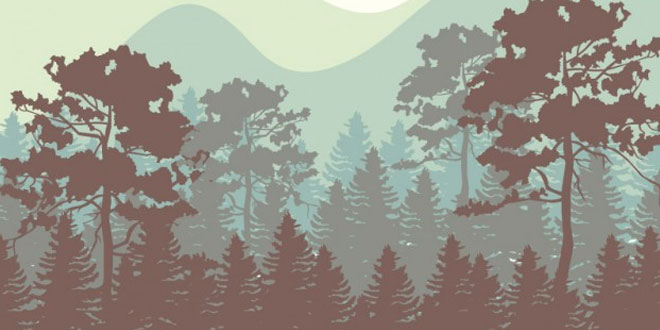Question: Define biome.
Answer: Biomes are very large ecological areas on the earth’s surface, with fauna and flora (animals and plants) adapting to their environment. Biomes are often defined by abiotic factors such as climate, relief, geology, soils and vegetation.
There are five major categories of biomes on earth. In these five, there are many sub-biomes, under which are many more well defined ecosystems.
Let us take a quick look at each of these biomes below:
- The Desert Biomes: They are the Hot and Dry Deserts, Semi Arid Deserts, Coastal Deserts and Cold Deserts.
- The Aquatic Biomes: Aquatic biomes are grouped into two, Freshwater Biomes (lakes and ponds, rivers and streams, wetlands) and Marine Biomes (oceans, coral reefs and estuaries).
- The Forest Biomes: There are three main biomes that make up Forest Biomes. These are the Tropical Rainforest, Temperate and Boreal Forests (also called the Taiga)
- The Grassland Biomes: There are two main types of grassland biomes: the Savanna Grasslands and the Temperate Grasslands.
- The Tundra Biomes: There are two major tundra biomes – The Arctic Tundra and the Alpine Tundra.
Biomes play a crucial role in sustaining life on earth. For example, the Aquatic biome is home to millions of fish species and the source of the water cycle. It also plays a very important role in climate formation. The terrestrial biomes provide foods, enrich the air with oxygen and absorb carbon dioxide and other bad gases from the air. They also help regulate climate and so on.
Question: Explain the significance of any eight medicinal plants.
Answer: To familiarize you with a few significant medicinal plants and their values, here are eight medicinal plants that can be found practically anywhere in India and the ills they cure:
- Bael: Extract of the leaves of this very familiar tree helps cure diarrhea, dysentery, constipation.
- Tulsi: Once a common sight at the courtyard of every Indian household, tulsi or basil leaves can cure cough, cold, bronchitis and loss of appetite. The plant is the most widely used herbal expectorant in the world.
- Peppermint or pudina: The plant’s leaves are popular mainly due to their taste. However, its medicinal values like curing indigestion and healing bruises are also not to be overlooked.
- Henna or Mehndi: Why do you think Indian women have always liked to apply mehndi on their hands? The answer is simple and obvious – mehndi helps cure burns.
- Neem: Ayurveds have documented this plant as one of the most valuable herb. The extract of its leaves work as a sedative and cure analgesic, epilepsy, hypertension.
- Cinnamon: Another popular expectorant, dalchini or cinnamon helps cure pulmonary problems such as bronchitis, asthma, and even cardiac disorder and fever.
- Lavender: The flower is widely appreciated for its smell. However, it also eases pain, and when applied to cuts and bruises, it functions as an antiseptic.
- Marigold: Popularly known as gaenda, marigold extract is good for sunburn, acne, and blemishes. This medicinal herb also soothes ulcers and helps cure digestive problems.
Question: “The Himalayas harbor a hardy range of animals, which survive in extreme cold” Justify the statement.
Answer:
- Ladakh’s freezing high altitudes are home to Yak, shaggy horned wild ox, wild sheep, Tibetan antelope, snow leopard, etc.
- These animals have thick fur which withstand extreme cold climatic conditions of Himalayas.
- Himalayas climate possess or make the animals hardy as they need to live in a harsh climate.
- Himalayas give shelter to a hardy (very strong, can withstand hard conditions) range, which survive in extreme cold.
- Animals need many plants and food to eat. But in Himalayas the amount of oxygen is less. So animals cant live there. And there are many snows and light animals cant thieve there. Animals with special features can only live. For ex: snow leopard can live because it has extra fur.
 Class Notes NCERT Solutions for CBSE Students
Class Notes NCERT Solutions for CBSE Students





